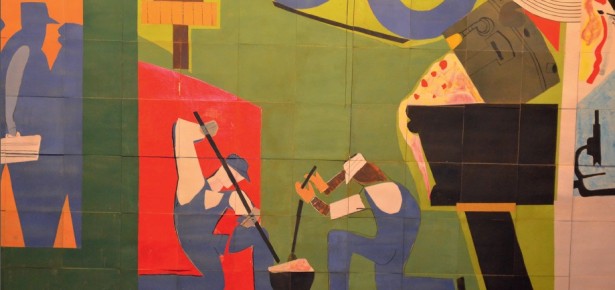
Sometimes I catch myself wondering why I teach labor law. The course, which focuses on the federal law that regulates the relationship between labor unions and employers, has a musty, old-fashioned feel to it. Even the facts of the leading cases—with steel mills and auto manufacturing plants, Teamsters Union locals and CIO picket lines—seem to belong in a labor history course not in a law school classroom. Even more antique feeling are the doctrines. These are laws designed in the 1930s to protect the economic rights of the working class by encouraging workers to join labor unions. Yet when I teach them in the second decade of the new millennium, I’m usually showing the students how they’ve been stripped of any meaningful effect by decades of employer hostility and narrow judicial interpretation. In 1960, very few people would have graduated from law school without taking labor law. It was part of the canon, something every lawyer should know about to be professionally literate. Now it’s a niche practice. I’m lucky if I get thirty students.
On other occasions I teach employment discrimination law. Now here’s a course that will attract a full house – ninety students, or whatever the lecture hall will hold. Would-be lawyers will pack the room to learn about the laws, passed since the 1960s, that forbid employers from discriminating against their employees on account of their race, sex, national origin, religion, age, or disability. Not every law student will take an employment discrimination class, but you can be sure that every graduate of a twenty-first century law school will have some idea about what the law of employment discrimination is.
Both labor law and employment discrimination law reflect the triumph of the version of liberalism that was ascendant in the middle of the twentieth century. It was a liberalism that sought to guarantee working people access to the middle class by promoting a modest form of income redistribution. It also embraced racial egalitarianism, deploying the law to combat the legacy of slavery and Jim Crow. Yet, if attendance in my classes is any indication, one aspect of liberalism has lost its appeal. At the very least, the laws that promoted economic egalitarianism by encouraging trade unionism have decayed, while those that promote racial equality have not. Indeed, though discussions of issues of race are often painful and deeply fraught in our country, we have those discussions. By comparison, serious talk about class, much less about public policy to address the widening gap between rich and poor, is a rare occurrence. How did America end up here, in a place where liberalism has been whittled down, rendered as a fragment of its former self?
My new book, Forging Rivals: Race, Class, Law, and the Collapse of Postwar Liberalism, addresses this question. It is a work of legal history, of African American history, and of labor history. It tells a series of stories: a strike at a shipyard in 1944; a battle over fair employment practices legislation in 1950s San Francisco; a political campaign against an anti-union ballot proposition in 1958; a civil rights protest at a hotel in the mid-1960s; a Black Power boycott of a department store in 1968. Each story sits at a point of conflict between the labor movement and the civil rights movement. Each conflict stems from the competing rights that the labor law and civil rights law gave to these two crucial constituencies of postwar liberalism. The stories are small, self-contained narratives, but they illustrate one of the fundamental causes of contemporary liberalism’s weakened state: how the dispute between the labor movement and the civil rights movement shattered liberalism in the last third of the twentieth century.
Read an excerpt from Forging Rivals here.
Latest Comments
Have your say!